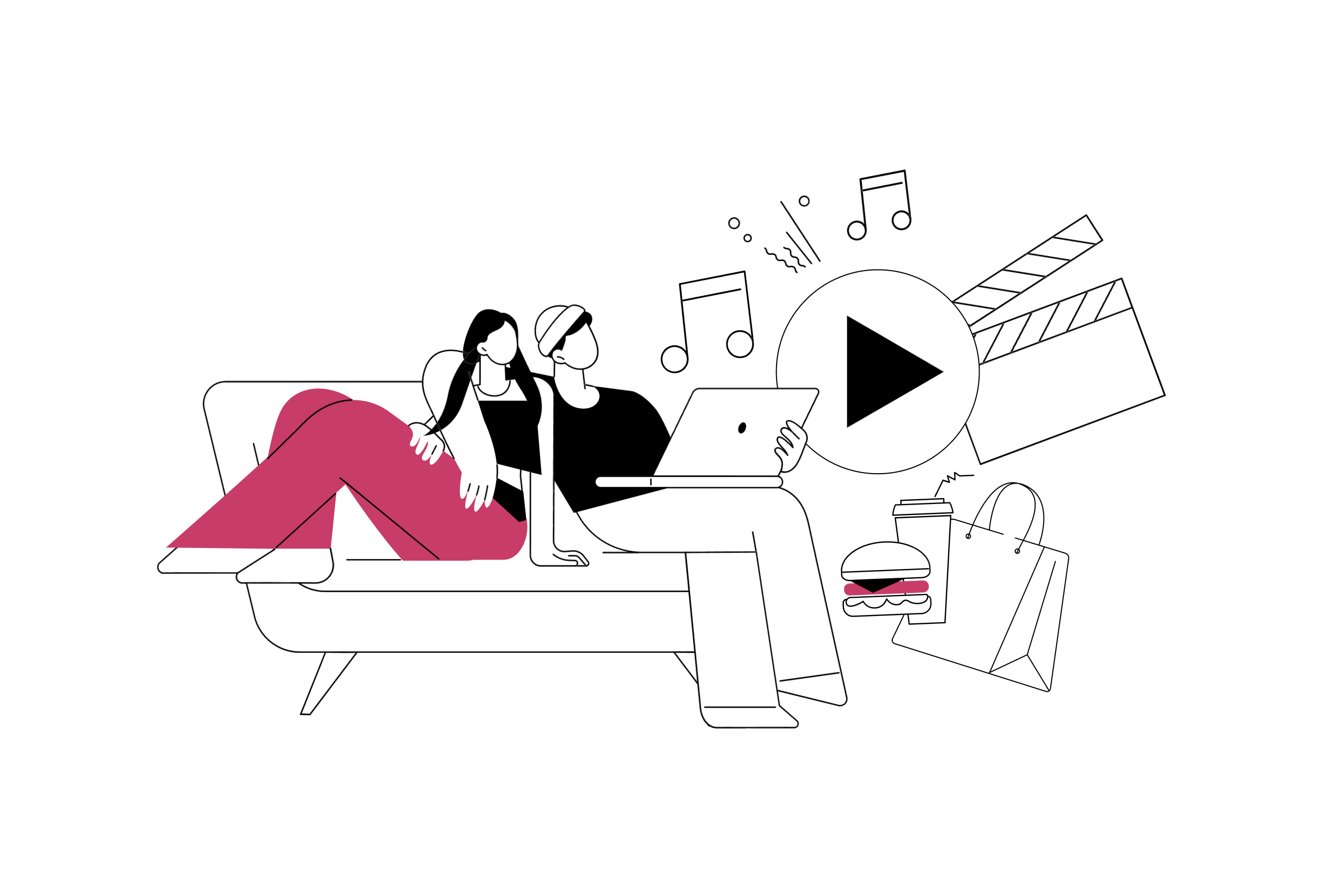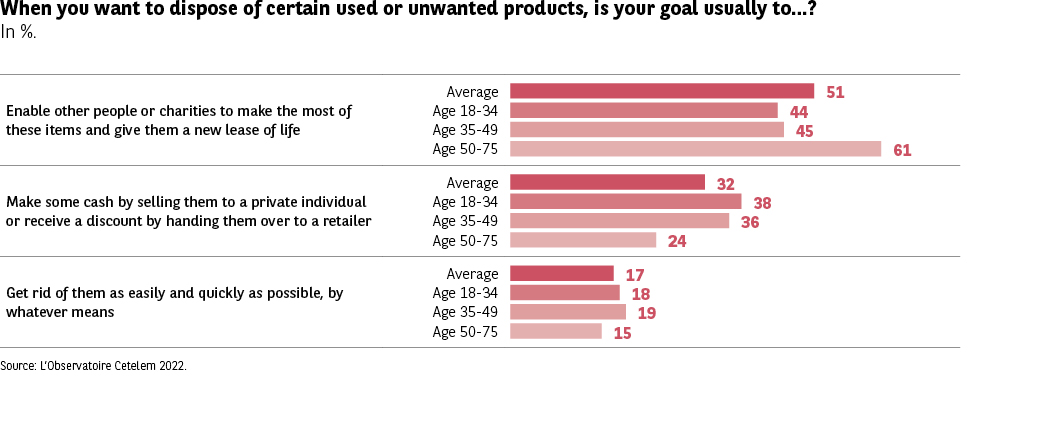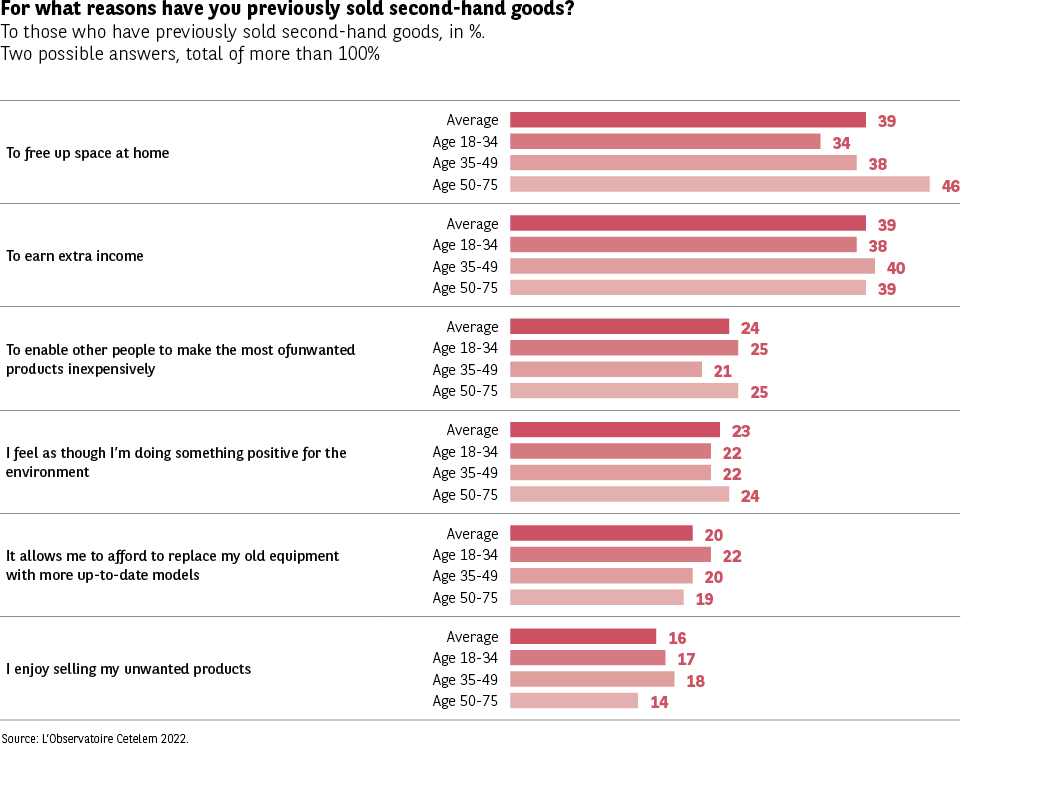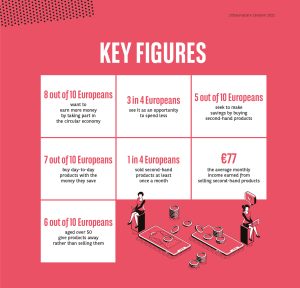A generational divide


One generation gives, another receives
As we have already pointed out on several occasions, particularly with regard to the sums generated by sales, the circular economy, and more specifically the advent of the consumer seller, has brought to light clear generational differences. These differences relate primarily to the behaviours individuals adopt when it comes to disposing of used or unneeded products.
Among the over-50s, the preferred approach is clear. 61% choose to donate them to a charity or give them away for free. Only 24% see them as an opportunity to make money (Fig. 16).
The under-50s tend to make a very different choice and are much less divided on this point. Only 45% of 35-49 year olds and 44% of under-35s donate unwanted items, while 36% of the former and 38% of the latter succumb to the desire to make some cash.
Fug. 16 Objectives when parting with used or unwanted items
Download this infographic for your presentations – Ensuring the item benefits others: 51% (18-34: 44%, 35-49: 45%, 50-75: 61%)
– Trying to earn money by reselling it: 32% (18-34: 38%, 35-49: 36%, 50-75: 24%)
– Getting rid of it quickly and
– Ensuring the item benefits others: 51% (18-34: 44%, 35-49: 45%, 50-75: 61%)
– Trying to earn money by reselling it: 32% (18-34: 38%, 35-49: 36%, 50-75: 24%)
– Getting rid of it quickly and
Empty your home, fill your wallet
Another area that separates the different age groups is the sale of second-hand goods. Almost 50% of Europeans aged over 50 sell used items to make space in their homes, 10 percentage points higher than the proportion of younger people who do the same (Fig. 17). The latter are more likely to engage in the practice in order to earn extra income. It should be noted that, across the generations, environmental concerns are by no means a priority.
Fig. 17 Reasons for selling second-hand goods
Download this infographic for your presentations Context: Multiple-choice responses in percent about motivations for selling used items.
Visual elements: Six sets of horizontal bars (overall + age groups).
Data:
1. Freeing up space: Avg 39% ; 18–34: 34% ; 35–49: 38% ; 50–75: 46%
2. Extra income: Avg 39% ; 18–34: 38% ; 35–49: 40% ; 50–75: 39%
3. Giving low-cost access to others: Avg 24%
4. Environmental good action: Avg 23%
5. Replacing old equipment: Avg 20%
6. Enjoyment of selling: Avg 16%
Main insight: Two dominant motivations are freeing up space and earning extra income.
Context: Multiple-choice responses in percent about motivations for selling used items.
Visual elements: Six sets of horizontal bars (overall + age groups).
Data:
1. Freeing up space: Avg 39% ; 18–34: 34% ; 35–49: 38% ; 50–75: 46%
2. Extra income: Avg 39% ; 18–34: 38% ; 35–49: 40% ; 50–75: 39%
3. Giving low-cost access to others: Avg 24%
4. Environmental good action: Avg 23%
5. Replacing old equipment: Avg 20%
6. Enjoyment of selling: Avg 16%
Main insight: Two dominant motivations are freeing up space and earning extra income.

